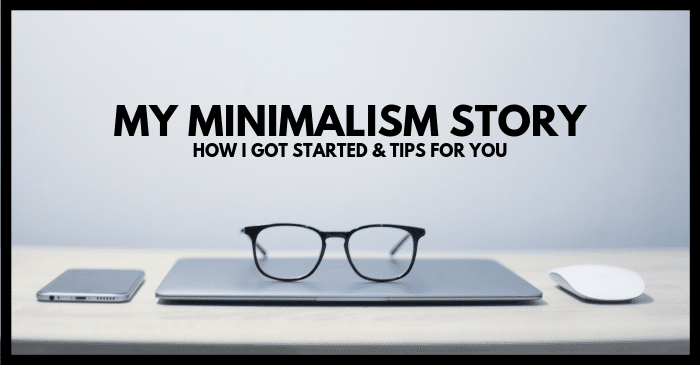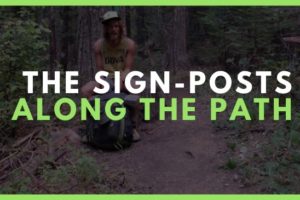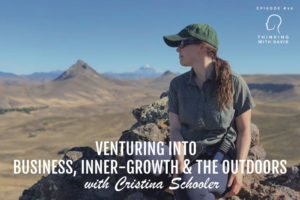My Minimalism Story
After college, I lived in an office room. My bed filled nearly the entire space and since there wasn’t any left for a closet, my clothes hung from a rack at the foot of my bed. This we called my external closet.
Despite my cramped living quarters, my tiny room gave me a sense of simplicity, happiness, and meaning. This early minimalistic foundation would soon grant me the freedom and flexibility to explore new opportunities.
The year was 2015 when I decided to leave my corporate job and hike the Pacific Crest Trail. I shed the rest of my belongings, kept only some clothes at my parent’s house, and set up the path.
Over the next six months, I hiked through the wilderness carrying my life around in a backpack weighing in at no more than twenty pounds. Life was simple and I learned that I could happily live with owning next to nothing. The simplicity felt conducive to cultivating happiness.

When the hike ended, I returned to the city (this time in Austin, Texas). After house-hopping around for nearly a year, I finally found a place to live where I began to accrue more things, behavior which felt at odds with my former devout perspective of minimalism.
Around this time I discovered Kondo’s The Life-Changing Magic of Tidying Up, Sadaki’s Goodbye, Things, and a bottomless well of YouTube content on minimalism. It was all the rage back then.
Skip ahead to the present day (at the time of re-writing this, nearly ten years later) and my perspective on minimalism has changed.
In this post, I hope to offer a holistic approach to minimalism, point to its essence, and demonstrate how minimalism can incorporate both the physical and non-physical aspects of life.
WHAT IS MINIMALISM?
Minimalism is a tool to rid yourself of life’s excess in favor of focusing on what’s important so you can find happiness, fulfillment, and freedom. —The Minimalists
I believe minimalism is widely misunderstood and interpreted through the narrow lens of materiality. When we look at minimalism through a holistic lens, it holds more potential than what’s been written about.
Here is my definition of minimalism:
Minimalism is a constantly unfolding process and practice of self-discovery. One optimizes and beautifies all domains of life, inside and out. You shed what is heavy, cluttered, and unnecessary while adopting what is light, orderly, useful, beautiful, and meaningful. It is a process of discovering what you value.
MISCONCEPTIONS
One of the most common misconceptions of minimalism is derived from the saying “less is more.” But owning fewer things isn’t necessarily valuable. When taken to its end, owning nothing results in poverty.
The difference between owning less and minimalism is rooted in choice and desire. It’s through shedding desire that one becomes truly rich.
It’s okay for us to own things. We need stuff in our lives to function. The point of minimalism is not that we should own nothing, it’s that too often, the things we buy that are meant to bring happiness end up weighing us down.
And the small things add up. It turns out the small things are not actually small. Our living spaces, office desks, computer desktops, trunks, and closets reflect what is happening inside of us.
If our physical living spaces are chaotic, so is our inward experience. Which ignored aspects of life do we need to pay more attention to? Where have we been procrastinating? What in life calls out to us in plain sight, demanding us to take action?
STEP 1) STARTING WITH THINGS
Shedding unnecessary physical items is perhaps the easiest place for most people to start with minimalism. The material world is obvious and tangible and it’s easier to see bedroom clutter than internal clutter.
Starting with the outside world—our rooms, our cars, our office spaces and closets—is low-hanging fruit. These opportunities are gross and accessible and allow us entry into what is subtle and difficult.
Rest assured, confronting the outside world is no small task. Paying close attention to and shedding the things that no longer serve us is no different than confronting and dealing with the underlying beliefs, stories, value structures, and emotions we associate with those items.
As minimalist blogger Anuschka Rees puts it:
“The things you own, big and small, aren’t just stuff. They represent your history, aspirations, habits, and values.”
In short, we reevaluate our things and living spaces to create space and to build the momentum and confidence needed to tackle the larger problems in our lives.
Where to start?
I can’t tell you where to begin because everyone has unique life conditions. Only you know for yourself where to best begin. That said, there are some models you can use to help you in your decision-making process.
In Marie Kondo’s book, The Life-Changing Magic of Tidying Up, she asks herself “Does this bring me joy?” when deciding whether or not to keep an item.
Instead of going room by room, she recommends sorting your things by category. For instance, gathering all your books into a single pile to make decisions in bulk.
STEP 2) MOVING TO THE INTANGIBLES
Shedding physical possessions is the tip of the iceberg of where minimalistic thinking starts. As one begins to clear space in the physical realm, it opens up doors to more subtle realms, like:
- time
- schedule
- priorities
- thought
- speech
- behaviors/actions
- activities
- relationships
Just like your physical possessions, each of these domains should be closely examined and carefully evaluated to ensure they are necessary to your survival and in line with your life goals.
Basically, there’s no reason to think that the game ends once your room is clean. Take a look at how you are spending your time, the words you use in speech and your relationship with yourself and others. What is in need of clarity, purpose and beauty?
STEP 3) ADDING BACK IN, BEAUTIFYING
As we cull our existence to only that which is meaningful to us, we are bound to reach some diminishing returns at a certain point. So much space has been cleared and a new foundation has been set, that it’s time to build again. Here, it makes sense to switch strategies from subtractive to additive. Now, we can begin to add back in and beautify.
Here, you want to think/feel with your senses (sight, smell, sound, touch, taste).
Practical ideas to beautify your space:
- Plants — bring life into your home, start a garden
- Color — use your visual sense, paint walls
- Texture — change the textures of your chairs, bed, etc. to ones you enjoy
- Smells — incense, candles, essential oils
- Sounds — raise or diminish or change the sounds of a room based on its walls and contents
- Art — support your local artist friends and/or purchase art you enjoy
Adding more of what you love to your space is a great reward to the hard work you’ve done earlier in the process.
STEP 4) TURNING OUR ATTENTION INWARD
Finally, and maybe most importantly, our attention can be turned inward.
In a way, minimalism is the act of participating in nature. Defined most simply, nature is what selects. Minimalistic thinking gives us the opportunity to be nature, to choose what we deem valuable for our minds, homes, communities, and ultimately, the world. Our efforts on this path allow us to live intentionally rather than allowing things to pile up, feeling as if we’re living at the whim of outside forces.
Conclusion
I invite you to create space. Space for new ideas and energy to flow. Hopefully, some of these introductory ideas have planted seeds of inspiration or sparked questions. It’s a large subject and there’s much more to dive into. Let me know if there’s anything specific you’d like to know about minimalism. Feel free to leave a comment or send me a message.
I hope you enjoyed the read. If you did, please share it with a close friend and consider following my journey:
Wishing you well.
Love,
David
PS — You can purchase my hiking memoir, The Trail Provides, on Amazon and Audible today.
Click below to read more about Minimalism:






Leave a Reply
I guarantee 100% privacy. Your information will not be shared.